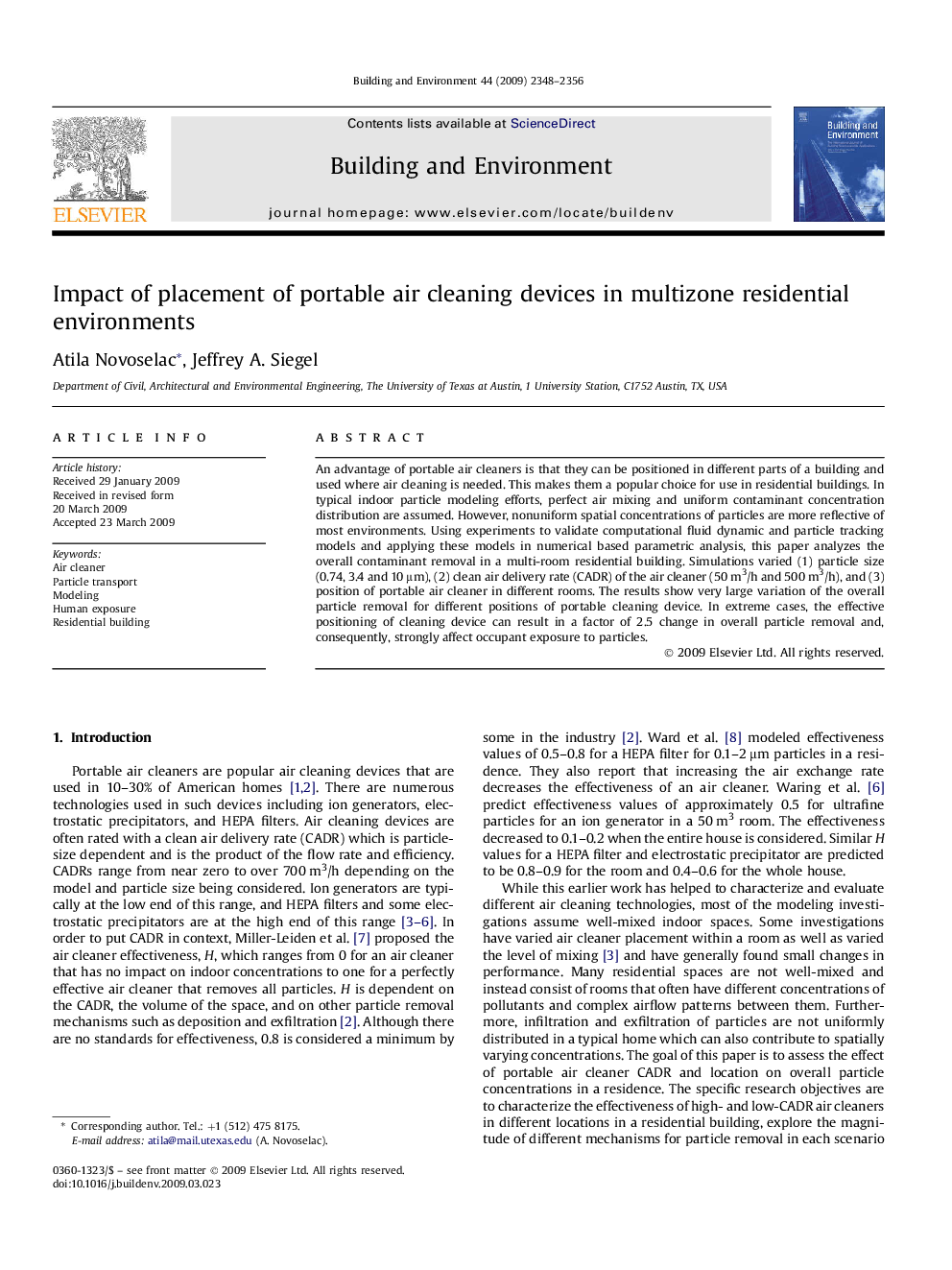| Article ID | Journal | Published Year | Pages | File Type |
|---|---|---|---|---|
| 249533 | Building and Environment | 2009 | 9 Pages |
An advantage of portable air cleaners is that they can be positioned in different parts of a building and used where air cleaning is needed. This makes them a popular choice for use in residential buildings. In typical indoor particle modeling efforts, perfect air mixing and uniform contaminant concentration distribution are assumed. However, nonuniform spatial concentrations of particles are more reflective of most environments. Using experiments to validate computational fluid dynamic and particle tracking models and applying these models in numerical based parametric analysis, this paper analyzes the overall contaminant removal in a multi-room residential building. Simulations varied (1) particle size (0.74, 3.4 and 10 μm), (2) clean air delivery rate (CADR) of the air cleaner (50 m3/h and 500 m3/h), and (3) position of portable air cleaner in different rooms. The results show very large variation of the overall particle removal for different positions of portable cleaning device. In extreme cases, the effective positioning of cleaning device can result in a factor of 2.5 change in overall particle removal and, consequently, strongly affect occupant exposure to particles.
